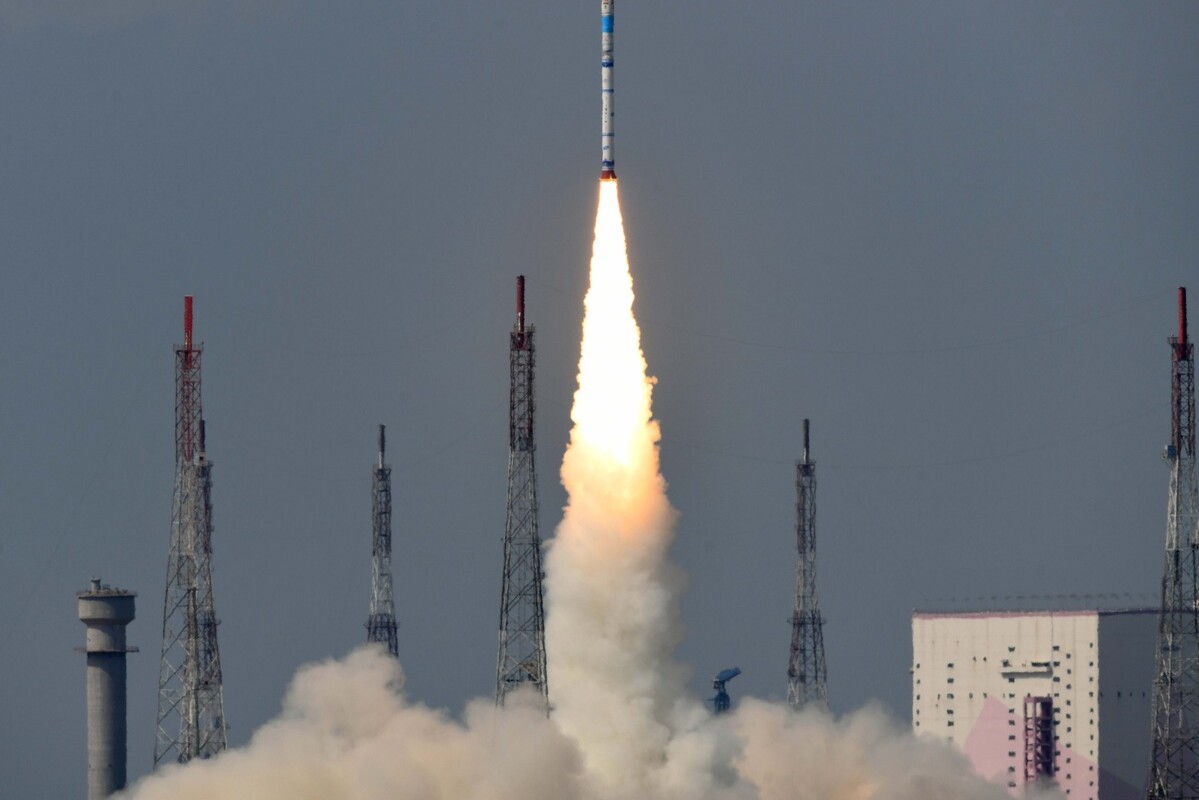India’s space agency, the Indian Space Research Organisation (ISRO), successfully launched its Earth Observation Satellite-8 (EOS-8) on Friday, marking a milestone in the country’s space exploration program. The launch, carried out by the small satellite launch vehicle (SSLV), took place from the Satish Dhawan Space Centre in Sriharikota, Andhra Pradesh, Asian News International (ANI) reported.
ISRO confirmed the successful deployment of EOS-08 into its designated orbit via a post on X, formerly known as Twitter. The agency highlighted that this launch marked the successful completion of the SSLV Development Project, a collaborative effort between ISRO and its Department of Space (DOS). The project’s success further paves the way for the commercialization of SSLV, with the responsibility for future launches being transferred to NewSpace India Limited (NSIL), ISRO’s commercial arm, and private Indian companies.
Read more: China’s 1,000-km/h high-speed flying train completes successful full-scale test
Moreover, the launch of EOS-08, the third and final developmental flight of the SSLV-D3 mission, followed a six-and-a-half-hour countdown. The satellite, designed for a one-year mission duration, carries a range of advanced technologies.
Additionally, the primary objectives of the EOS-08 mission include the development of a microsatellite, the creation of compatible payload instruments, and the integration of cutting-edge technologies that will be crucial for future operational satellites.
🚀SSLV-D3/EOS-08🛰️ Mission:
The launch of the third developmental flight of SSLV is scheduled for August 16, 2024, in a launch window of one hour starting at 09:17 Hrs. IST pic.twitter.com/JWxq9X6rjk
— ISRO (@isro) August 12, 2024
A leap forward in satellite technology
EOS-08 showcases a significant advancement in satellite architecture with the introduction of an innovative Integrated Avionics system known as the Communication, Baseband, Storage, and Positioning (CBSP) Package. This system further combines multiple functions into a single, efficient unit, utilizing cold redundant systems built with commercial off-the-shelf (COTS) components and evaluation boards. This design allows for a substantial data storage capacity of up to 400 GB.
For more news on technology, click here.




